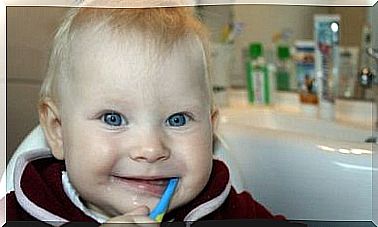What Is The Neonatal Blotter Test? – Being Parents

When a baby is born, the maternity hospital does several tests. One of them is the neonatal blotter test which is performed when the newborn is between 7 and 24 days old.
It is a test that can detect innate errors in metabolism that can affect a child’s development before symptoms appear.
This test is performed by taking a few drops of blood to detect congenital diseases of the endocrine-metabolic system.
It is a clinical examination for an early diagnosis which consists of a rapid and superficial sample on the heel. Once the blood is collected, it is placed on a special card. This is then sent for analysis in a laboratory.
What does the neonatal blotter test consist of?
As we mentioned above, this test is a quick sample of a few drops of blood from the baby’s heel. To perform this test, a nurse draws the blood quickly and superficially. Thus, the pain is minimized for the child.
Then we put a drop of blood on a piece of paper. All this information is sent to the laboratory for analysis.
The results are sent within three weeks directly to the parents’ home. In addition, if the sample is not valid, the test must be repeated and a new sample taken from the child’s heel.
Despite all the precautions and sensitivity of health workers, the baby will certainly respond to fear and pain with crying and screaming. It is for this reason that we advise the mother to be near the child so that she can calm and console him immediately.

What happens if the result is positive?
You should know that in general, the results are available within 6 to 8 weeks. In addition, they are written in the baby’s medical record and should be kept for all future medical visits.
In the event that the results are positive, further examinations must be carried out to carry out a complementary or specialized test. The laboratory then contacts the parents directly in order to make an appointment and perform a new test.
You must then go back to the hospital or clinic to take a blood sample from the baby’s heel and repeat the test.
If the diagnosis is confirmed after the second test, parents should contact a center specializing in metabolic disease. They will help parents and guide them in the best possible way.
Treatment depends on the disease diagnosed. Indeed, if the baby suffers for example from hypothyroidism or adrenal hyperplasia, he should take replacement hormones throughout his life. However, if he is diagnosed with hemoglobinopathy, he will simply have to undergo preventive treatment against certain infections.
Diseases that can be diagnosed
The majority of diseases that can be diagnosed are congenital metabolic alterations. They do not necessarily show up with specific symptoms at this age, but they can alter or compromise the development of the baby.
However, since these are newborns, the diseases detected are very rare. Therefore, it is important that the disease is detected in order to intervene before it manifests itself.
It should be known that if these diseases are detected in time, they will not affect the life of the baby. Here are the diagnosable diseases:
- Hemoglobinopathies, sickle cell abnormality.
- Cystic fibrosis.
- Congenital metabolic errors related to the metabolism of fatty acids, carbohydrates and amino acids that include galactosemia and phenylketonuria.
- Congenital adrenal hyperplasia.
- Congenital hypothyroidism.
- Infections such as human immunodeficiency virus (HIV) and toxoplasmosis.
Ultimately, the blotter test is essential for detecting rare congenital diseases immediately after birth. This allows a diagnosis to be made even before symptoms appear.
If you are a mother, you must be available to comfort your baby after this test. Remember, this is a beneficial test that helps ensure the health of your child.









